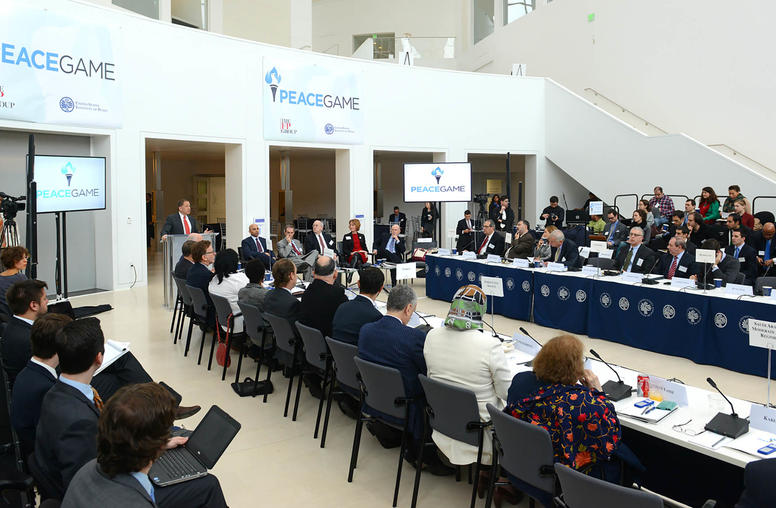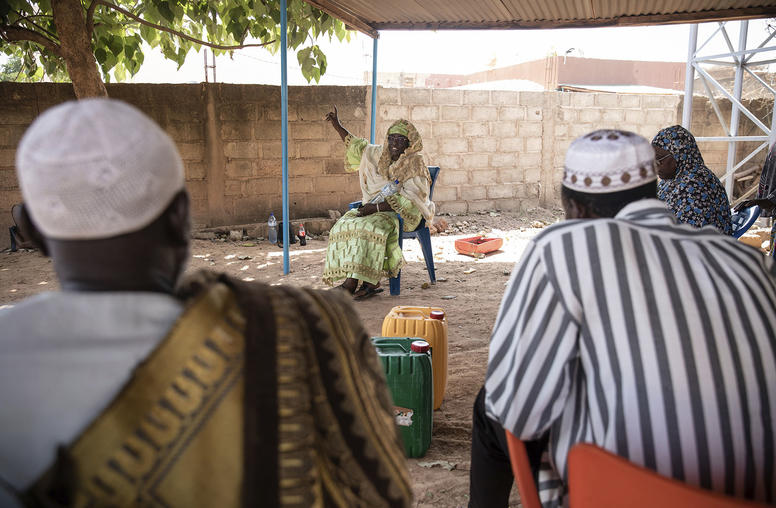Media as Global Diplomat II: New Findings on the Science of Media and Conflict
While public diplomacy experts struggle to develop strategic communications campaigns to win hearts and minds abroad, new research on the frontiers of neuroscience and psychology suggests a different approach.
While public diplomacy experts struggle to develop strategic communications campaigns to win hearts and minds abroad, new research on the frontiers of neuroscience and psychology suggests a different approach. This meeting, co-sponsored by the USIP Center of Innovation for Media, Conflict and Peacebuilding and the Alliance of Civilizations Media Fund, brought researchers and media makers together in an unprecedented dialogue on these new findings and their implications for the international community’s ability to use media to prevent conflict.
Media as Global Diplomat I convened leading thinkers at the start of the new Administration to focus much needed attention on the dramatically changing media landscape, and how America could re-engage the world with a public diplomacy strategy adapted to the digital age.
Since that time, there have been countless reports and meetings held to discuss public diplomacy strategy and the best ways to deliver positive messages -- without much understanding as to what is a "positive" message or a "negative" message or under what circumstances such messages have greater or less impact on conflict. And yet research on the relationship between media and inter-group conflict shows that these are vitally important questions, for which we are only beginning to have answers -- thanks to advancements in brain imaging and psychophysiology methodologies that have literally allowed us to "get inside people's heads."
This meeting discussed the public policy implications of some of the most interesting findings to date, with particular focus on research commissioned by the Alliance of Civilizations Media Fund from labs at Harvard, MIT, and the New School.
Explore Further
9:30 - 9:40 A.M. Welcome to USIP and Framing of the Day
- Sheldon Himelfarb
Associate Vice President and Executive Director, Center of Innovation for Media, Conflict & Peacebuilding, USIP
9: 45 - 10:15 A.M. Her Majesty Queen Noor of Jordan
- Richard Solomon, Introduction
President, U.S. Institute of Peace - Her Majesty Queen Noor of Jordan, Keynote Speaker
10:15 - 11:15 A.M. The Research Frontier: The Brain and Violent Conflict
- Cynthia Schneider, Moderator
Former U.S. Ambassador to the Netherlands
Senior Fellow, Saban Center for Middle East Policy, Brookings Institution - Shamil Idriss
Executive Director, Alliance of Civilizations Media Fund - Rebecca Saxe
Professor of Cognitive Neuroscience, Massachusetts Institute of Technology (MIT) - Jay Winsten
Associate Dean, Harvard School of Public Health
11:15 - 11:30 A.M. Break
11:30 - 1:00 P.M. The Storytellers: News, Drama, and the Public Interest
- Tamara Gould, Moderator
Vice President, ITVS International Distribution - Michael Medavoy
Hollywood Studio Executive (Apocalypse Now, Raging Bull, and others)
Author of "American Idol after Iraq: Winning Hearts and Minds in the Global Media Age" - Riz Khan
Senior News Anchor, Al Jazeera English - Arik Bernstein
Founder, Alma Films
Creator, Gaza-Sderot - Life in spite of everything - Lucas Welch
President and Founder, Soliya



